Second Amendment: How Will NYSRPA v. Bruen Affect Your CCW Rights?

Update: It happened! Read More Here
 Introduction
Introduction
I am not an attorney, paid attorney spokesperson, or even an educated or credible person by any measure. My rationales and biases are clearly the ravings of a madman and should not be taken seriously or misconstrued by anyone as legal advice or even enjoyable content. With that said, let’s examine why everyone is talking about New York State Rifle and Pistol Association v. Bruen, and what it means for CCW and your Second Amendment rights.
As potentially monumental as Heller v. DC and McDonald v. Chicago, this case has been closely followed along with Young v. Hawaii and a few others that present a great test case for a constitutional argument about the absolute right and/or any legitimate limitations on the Second Amendment and the right to carry a firearm outside the home.
As the New York State Police Superintendent, Kevin Bruen holds issuing authority for firearm carry permits over the state of New York. Plaintiffs assert that the denial of a license to carry based upon a lack of ‘good cause’ is unconstitutional on its face because it is discriminatory in its real world application, inconsistent with accepted regulatory practices upon other constitutional rights such as free speech.
 Analogy
Analogy
To use an example, the content and expression of speech may not be generally regulated or prohibited, but the time, place, and manner may. So, a loud protest marching through a neighborhood in the middle of the night may be prohibited based upon the fact that waking up a neighborhood in the middle of the night is not integral to the content or expression of a protest or for it to be efficacious or persuasive.
However, the protest must be allowed somewhere at some point in time where it is appropriate, such as at noon in a town square. Under New York’s ‘may issue’ regime that requires special cause for licensure, we could think of this sort of application to the First Amendment as a de facto ban on free speech unless an individual wishing to protest had good cause to do so. In other words, protesting would be outright banned unless perhaps an individual felt a pending indictment, policy, or a past conviction for a crime was unjust against their individual person and could show real or potential damages against themselves individually. No generalized group or gathering would be able to exercise this right to any degree whatsoever. The government would then also have discretion to pick and choose who may exercise their First Amendment rights based upon unpublished and subjective criteria, such as if they deemed the offensive policy, indictment, or conviction to be severe enough against the individual to be worth protesting. Or, just whether the issuing officer liked the person or issue being protested or not on a personal level. Just like firearm carry for self-defense is a rarity in New York, so would be free speech.
This would necessarily have a chilling effect on public discourse and is completely incompatible with a free society and our individual rights as enshrined in the First Amendment. A single person walking down the street with a sign–if they were even allowed to at all–cannot be the sum total of free speech. Thus, the First Amendment cannot be regulated this way. Fourth Amendment rights to freedom from search and seizure under this regime would be prohibited unless a defendant could show that they had something to hide. Fifth Amendment rights could be used by judges and juries as discriminatory and as evidence against the accused unless the individual disclosed an inculpatory and prejudicial fact about the case against themselves, thereby nullifying the Fifth Amendment in totality. The legal absurdity at practice here becomes clear when applied to other rights we enjoy and protect every day. Every right is worth insisting upon, whether you can show an immediate and proximal cause to exercise it or not.

Because Heller clearly established the individual right to keep and bear arms in modern American jurisprudence, the inconsistency in regulatory application and judicial review against all other constitutionally-enshrined individual rights becomes a substantial question that demands clarification. Sitting Justice Clarence Thomas has at times been at odds with the vague decisions issues by the court, stating, “the Court’s decision to deny certiorari in this case reflects a distressing trend: the treatment of the Second Amendment as a disfavored right.”
In New York’s case, they are an outlier among the 50 states in the union and are one of only a small handful of states that have a ‘may issue’ system for CCW permits. The vast majority of US states have a ‘shall issue’ carry permit system (and half of all US states have no permit requirement to carry at all), which instructs the issuing authority in each state that they have a legal mandate from the state government to issue a carry permit if an applicant meets a set of standards that are roughly the same as a NICS background check when you purchase a firearm. As long as an applicant is not a prohibited possessor—and in some states meets some sort of training requirement—the state government must issue you a carry permit. In New York’s case–along with a few other outliers like Hawaii and California–these are issued based on subjective criteria that will have a tough time standing up to even an intermediate scrutiny test. Laws that contain subjective criteria for the exercise of constitutional rights are often struck down in court because they offer no guarantee of the enjoyment of a right to every person that seeks it under a clear and achievable standard that can be realistically met. The subjective standard in question is typically called a, “good cause,” requirement. Essentially, you are prohibited from carrying a weapon for self-defense without articulating a specific threat such as a stalker with a restraining order or a written threat against your individual life. Whether or not you agree with the ability of an ordinary citizen to carry a firearm doesn’t really matter; it’s still legally a right, not a privilege.
In a ‘may issue’ system, this is done deliberately to act as a de facto ban on carrying arms without upsetting the constitutional issue of outright banning the bearing of arms, and that can be inferred from its real-world application. In states like California, New York, and Hawaii, firearm carry permits are generally only issued to the police, the rich, and the politically-connected (or the corrupt) unless the issuing authority has a predisposition to approve them based on an unstated standard in state law. In California, for example, the issuing authority is the sheriff of each county. As such, some sheriffs will readily issue them based on a minimum standard and will accept nearly anything to satisfy the ‘good cause’ requirement and some will not. In this case, those issuing Sheriffs have taken the grey area of a ‘good cause’ requirement and turned it on its head by using the subjectivity in the law to the advantage of their constituents that elected them.
Why is this case so important?
The NYSRPA v. Bruen case offers a great test case based on a number of factors not present in many others.
-
New York’s firearm carry permit system is arbitrary and capricious. Discrimination and subjective criteria that cannot clearly be met with regularity are typically struck down due to a violation of the 14th Amendment. Equal protection under the law does not suffer discriminatory schemes, particularly when they act as a de facto ban upon the exercise of a constitutionally-protected right. Any intermediate or strict interest-balancing test must show that discrimination is at least narrowly tailored and achieves a desirable outcome in line with the government’s compelling interest. For example, prohibiting firearms possession from those convicted of violent felonies does seem on its face to achieve some measurable goal of public safety without creating undue burdens upon the general population’s enjoyment of their right to keep and bear arms. New York’s carry permit system does not meet this standard with its blanket bans and tiers decided upon completely arbitrary criteria that cannot clearly be met by the ordinary citizen of good moral character.
-
New York’s firearm carry permit system has separate tiers for hunting, rural, and urban carry. The legality of this style of time, place, and manner prohibition is largely unmirrored in most states, and is much more restrictive and severe than states that have other semi-tiered systems. Even in states with tiered or ‘enhanced’ carry permits such as Idaho that are above ‘regular’ carry permits, these enhancements also operate on a shall-issue basis and are not inaccessible to the ordinary citizen burdened by subjective criteria and political decision making. Under any interest-balancing test such as intermediate scrutiny, the state government lacks statistical data to show the efficacy of these restrictions when compared to other states and metropolitan areas without them. Because interest-balancing tests require a compelling government interest and that the interest can be met by a restriction against a right based upon at least a preponderance of the evidence, New York’s scheme in this regard is very weak in its legal knees. Sensitive areas such as courthouses or sports stadiums can be shown to be small, controlled environments where there is extra security provided beyond that offered for someone walking down an ordinary street. Prohibitions here under the law can be deemed reasonable by a court. New York’s system essentially classifies the entirety of all publicly-accessible urban areas as sensitive areas despite a lack of extra security available beyond a municipal police force. Given that SCOTUS has previously decided that law enforcement officers are under no duty to act in virtually any circumstances [See: 2020] (they are not your personal body guards—and fair enough), New York’s case for the same level of individual security being provided by law enforcement falls far short of that offered by the Second Amendment.
-
New York’s assertion about their denials of the plaintiff’s application is a contradictory catch-22 that will likely be smashed in any resulting opinion in this case. On one hand, they assert that a rural area is less dangerous and therefore it is safe to issue the applicant a rural carry permit. The need to defend one’s self is unlikely in the first place and the reasoning behind issuing a rural permit is dubious but allowable. On the other hand, urban areas are substantially more dangerous, and the plaintiff should not have his permit issued in an admittedly far more dangerous area because law enforcement exists—even though New York’s urban areas still have a much higher crime rate in spite of the much higher presence of police. This was a subject of questioning by the justices during oral arguments and will be more than likely an area where discriminatory issuance will fall. Contradictions in logic are very often caught by the Supreme Court and opined accordingly.
-
New York’s as-applied denial of the applicant’s unrestricted carry permit cannot be shown to be substantiated on any interest-balancing test, which is always the core of gun control legislation. Denying the ability of a citizen of good moral character a right they would enjoy in the vast majority of the United States based upon no data but instead vague generalizations and conjecture unsubstantiated by science will not fly. New York actually used the ‘more guns = more crime’ argument in the Supreme Court against a presumptively conservative majority. This argument has been debunked time and time again but continues to rear its head because there really isn’t much of a leg to stand on for gun control advocates otherwise. This approach fits with an interest-balancing test where the government asserts a general or compelling interest in public safety. Their logic is that because public safety is important, the law-abiding populace must be disarmed. Although repeated to this day by gun control advocates, numerous studies have shown no direct correlation between the amount of legal firearms and any level of violent crime, positive or negative, particularly when the United States is compared to other nations such as Switzerland and Israel with much higher levels of firearm ownership, but lower levels of violent crime. Thus, an interest-balancing approach based on vague assertions of an interest in public safety fall flat.
-
New York’s case essentially rests upon the notion that states should have wide latitude to determine their own firearm policies despite both legislative and judicial precedent to the contrary in the cases of other constitutional rights. Where strict scrutiny is practiced on cases such as the first amendment, New York believes intermediate or rational basis review should apply to the Second Amendment because it is a politically-disfavored right among much of their voting base. Because lower levels of judicial scrutiny have been used to chip away at the Second Amendment in history, this should be continued despite a total lack of evidence of efficacy and no sense of narrow tailoring so as not to burden the core of Second Amendment rights. On these grounds, New York’s case again falls flat and is absurd on its face.
Implications
So what does all of this mean for the average person that practices concealed carry or even open carry? We don’t yet know. While the Supreme Court prefers to create more narrowly-tailored decisions on issues that are controversial like the Second Amendment, we can at least expect some of the most constitutionally-offensive and illogical aspects of ‘may-issue’ regimes to be discarded. When NYSPRA v. Bruen applied for certiorari and review was granted, the Supreme Court re-framed the original question to apply more directly on an as-applied basis. As-applied versus facial challenges do two separate things; an as-applied challenge largely rests upon an unequal or discriminatory application of a law to an individual person. In the broadest sense, relief on an as-applied basis in this case would force New York to grant the applicants their unrestricted carry license without directly affecting the existing law in any substantial way as-written. A facial challenge is the sort of thing we often think of in Supreme Court cases, where a law is upheld or struck down either in its entirety or to such a substantial degree that it affects the entirety of the public within that law’s jurisdiction and some even outside of it due to similar laws in other places. That is to say, the law is offensive to the constitution on its face regardless of its direct application to the complainant. Strictly-speaking, an as-applied challenge would speak to whether the plaintiffs had met the ‘good cause’ requirement and been wrongfully denied, while a facial challenge would speak to the constitutionality of the good cause requirement’s very existence.
There could be an unspecified reason that the question was modified. Due to the internal politics of the members of the Supreme Court, it is entirely possible that the rewrite was necessary to gain the approval of enough justices to take the case. During arguments, this seems to have gone out the window and the state of New York, the justices, and the plaintiffs have all agreed that the real argument is being had over the general notion of the right to carry a firearm outside the home more broadly.
Since most states are already shall-issue regimes, most of the direct opinion ‘win’ to be had in this case won’t mean much to the average person. While New York, California, and Hawaii may become shall-issue states, this does not resolve the question of traveling. Some states like California, New York, and Illinois honor very few–if any–non-resident or out-of-state permits of any kind. While surrendering your constitutional rights when you cross state lines is very clearly a 14th amendment and 2nd amendment question, this issue has not been argued in this case. If New York does become a shall-issue jurisdiction, you should still expect a total ban on non-residents carrying and non-resident permits to carry no legal protection. New York will not be required to issue you a carry permit if you live in New Jersey, and they will not be required to honor your permit from your home state or another state that issued you one despite not being a resident, like Arizona, Florida, or Pennsylvania. If you don’t have a New York state license to carry and you decide to do it, you’re going to prison. Your permit from another state still means nothing.
We should see the establishment of the right to carry to some degree. It will likely be narrowly tailored to outlaw may-issue regimes that have never had any place in the law, but won’t say much on specifically what that means in terms of prohibitive areas as determined by local and state legislatures or the particular criteria upon which a permit must be based; only that they be reasonable and achievable for citizens of good moral character without substantially burdening the core of the Second Amendment. New York even admitted that their scheme likely won’t pass strict scrutiny analysis, and even Justice Sotomayor poked at the arbitrary nature of the law in regard to drawing a line between the rights in your home and in public.
 The biggest ‘win’ to be had in this case rests upon the potential precedence set in regard to judicial scrutiny levels for Second Amendment cases. Heller fell short of directly ordering lower courts to use strict scrutiny in Second Amendment cases. Lower courts have used this legal ‘dodge’ of the issue to use rational basis and intermediate scrutiny when reviewing Second Amendment cases so as to offer deference to local legislators either out of principle for their local powers, or out of an animosity toward the right to keep and bear arms. Either way, the Supreme Court clearly declaring strict scrutiny as the only legal basis for reviewing Second Amendment cases would open the door for lower courts to routinely strike down everything from assault weapon bans to existing federal and state law concerning NFA items such as silencers, short-barreled rifles, and more for the foreseeable future.
The biggest ‘win’ to be had in this case rests upon the potential precedence set in regard to judicial scrutiny levels for Second Amendment cases. Heller fell short of directly ordering lower courts to use strict scrutiny in Second Amendment cases. Lower courts have used this legal ‘dodge’ of the issue to use rational basis and intermediate scrutiny when reviewing Second Amendment cases so as to offer deference to local legislators either out of principle for their local powers, or out of an animosity toward the right to keep and bear arms. Either way, the Supreme Court clearly declaring strict scrutiny as the only legal basis for reviewing Second Amendment cases would open the door for lower courts to routinely strike down everything from assault weapon bans to existing federal and state law concerning NFA items such as silencers, short-barreled rifles, and more for the foreseeable future.
This would be the way for the ‘conservative’ majority to rule correctly on a Second Amendment issue without directly confronting any particular restriction in other existing laws, helping to preserve the political capital of the court in the face of new calls to pack it with political appointees. News media isn’t generally interested in reporting on legal theory since it’s not able to be dissected for the layman in a headline, thus we could reasonably presume this sort of move would have minimal pushback in the press and the political sphere. Some of the justices touched on the amicus request for judicial scrutiny precedence during oral arguments, and we can expect it to be addressed in some way.
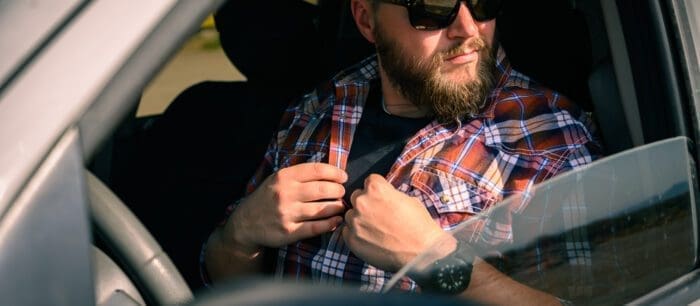
No matter what happens, we can certainly expect a flurry of legislation and lawsuits to follow a decision that repeals any portion of New York’s permit regimes or lays out a specific level of scrutiny for Second Amendment cases. Restrictive states won’t go down without a fight, and many of these new laws will have to be challenged one-by-one. An opinion is expected to be issued by June or July 2022.
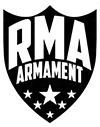






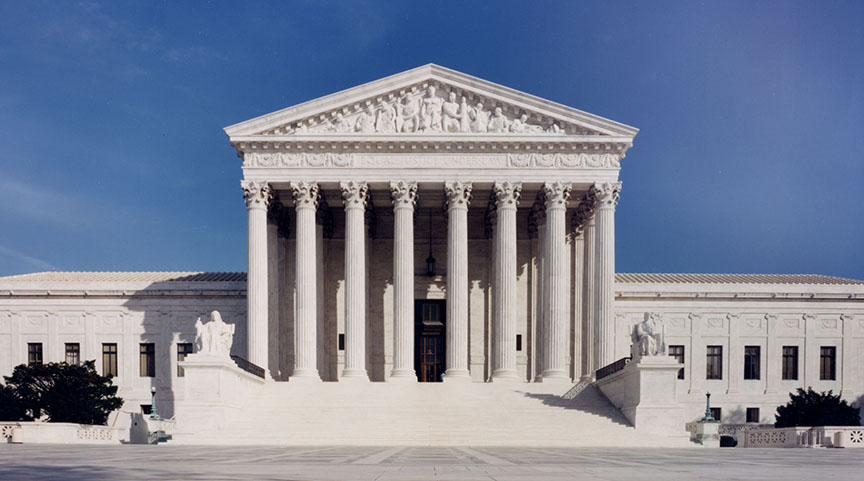
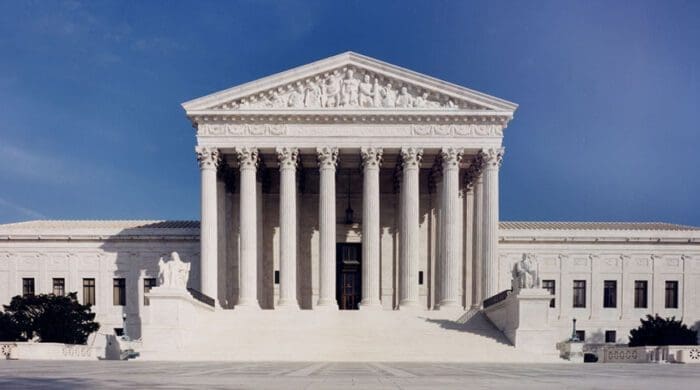 Introduction
Introduction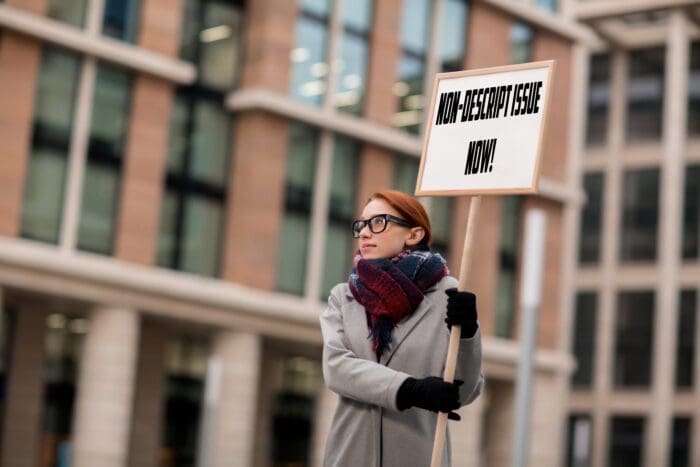 Analogy
Analogy